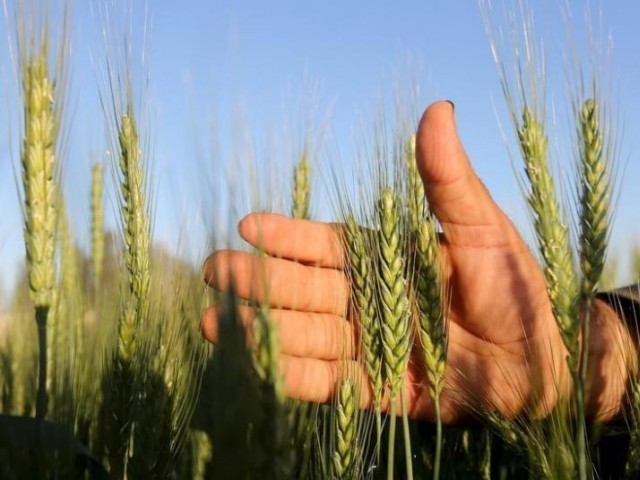“Where CPEC envisages an era of golden development for Pakistan’s economy, there lies at disposal a bona fide opportunity for Pakistan to unlock an expansion of its agro exports with China, worth $100 billion.”
Muhammad Mehmood, Punjab Secretary for Agriculture shared these imperative suggestions while speaking at the launch of the study on “CPEC – Prospects & Challenges for Agriculture” in Faisalabad.
According to him, by bringing necessary readjustments to its agricultural sector, Pakistan can successfully capitalize upon a major slice of $100 billion worth of agriculture produce imports to China.
Mehmood was of the view that while containers filled with Chinese exports will reach the international market, these containers will be empty on their return and here Pakistan can immensely capitalize the opportunity to export its agricultural produces-at which Pakistan is best, to China.
Again adhering to the conventional growth model of development, Mehmood said that it is the trickle down effect, which would channel down the massive benefits of expansion to the rural farmers. Higher productivity and new technological induction will yield the sector profits.
However, Mehmood’s speech reflected idealism, its practical application will require concrete steps on part of the current government.
Among the several other challenges, that are needed to be untangled, to achieve the benefits in its purest form, there also comes under hard pressure the present nexus of politics, economy and capitalism.
Read More: CPEC: Prosperity project
Can the present nexus of political economy be broken for CPEC?
Pakistan needs to manage its scant water resources before it can efficiently capitalize on these avenues of GDP expansion, land reforms and redistribution rests on the top of changes that are to be introduced to bring the much-needed economic expansion for the population at the end of this chain. The consequential agitation coming from drilling in to the power setup of capitalists may backfire the progress.
How well this would fall in compliance with the agendas of the political elite is currently immeasurable. The reluctance in land reforms is synonymous to compromising the rehabilitation of the already ailing agricultural export sector.
Market Manipulation
Mehmood also revealed that they are concentrating on high-value crops and a 10-year programme has been formulated to develop one lakh acres of land in the Potohar region for planting grape and other high-value crops.
What impact it would have on the prices for the local users? Extensive high-value crops coming in the local market may escalate the fruit prices for the local users as well pushing up the figures of inflation. How promptly can government cage this monster of inflation through manipulation in the mechanisms of demand and supply is uncertain.
Read More: CPEC: a corridor of prosperity or uncertainty?
The cost to local producers
Mehmood also mentioned that major Chinese importers will also be invited to utilise this land for growing high-value fruits in addition to developing the agriculture processing industry on modern scientific lines.
Giving the land control to the external producers is tantamount to allowing them to have the complete share of profits at the expense of the opportunities for the local producers. A more collaborative work between the local and external producers seems more viable if Pakistan, needs to drive its economy on its exports.
Read More: CPEC: Is the sovereignty of Pakistan being compromised?
Where land reforms is a controversial subject, its achievement stands in absolute affirmation to the Goal number 1 of the sustainable development goals of ‘eradicating poverty’ in every form.
While Pakistan is the most conducive land of cheap and affordable labor, expanding its water storage capacity and control on floods each year are of paramount importance before the importers are invited to pour in their investments.














